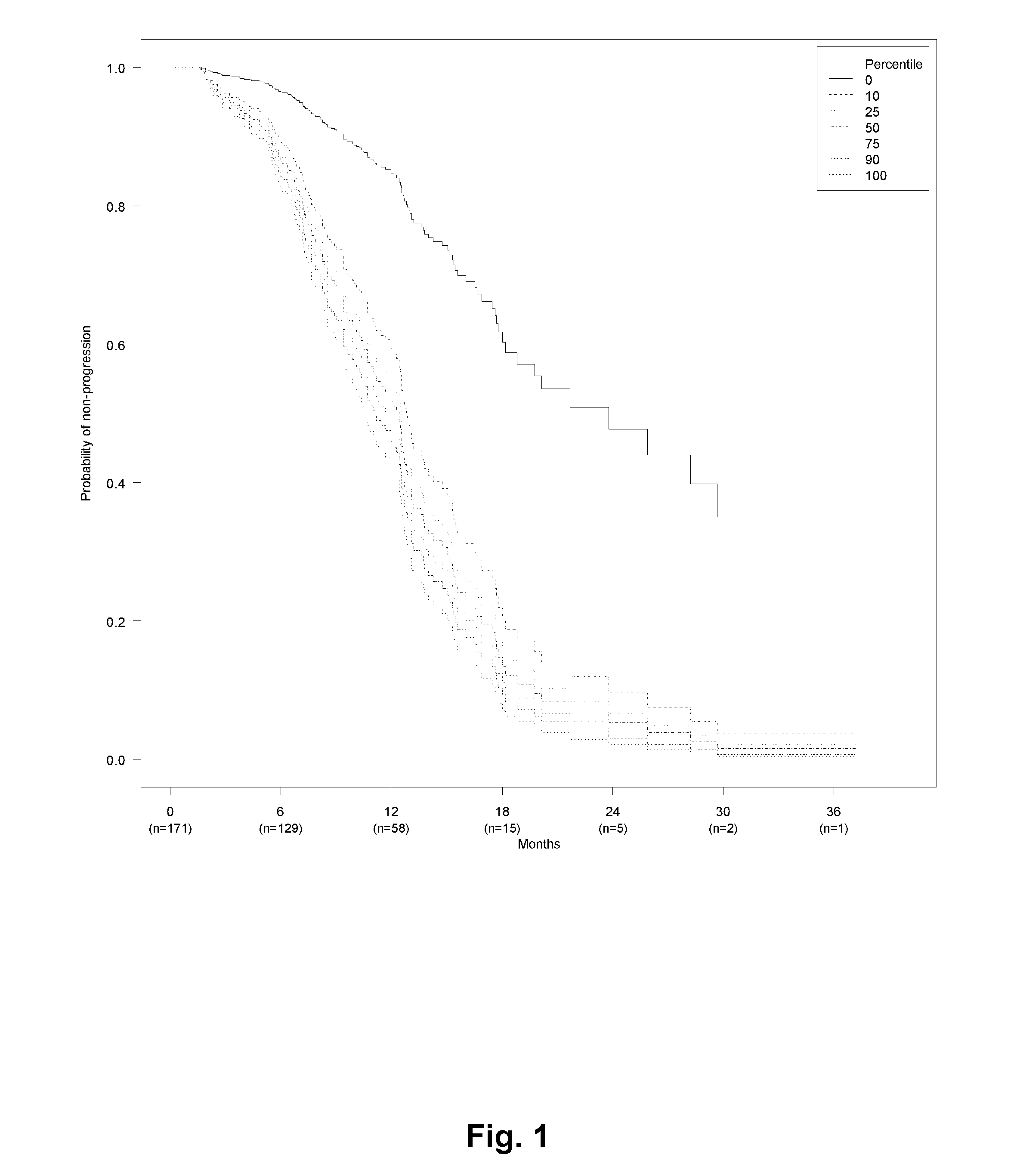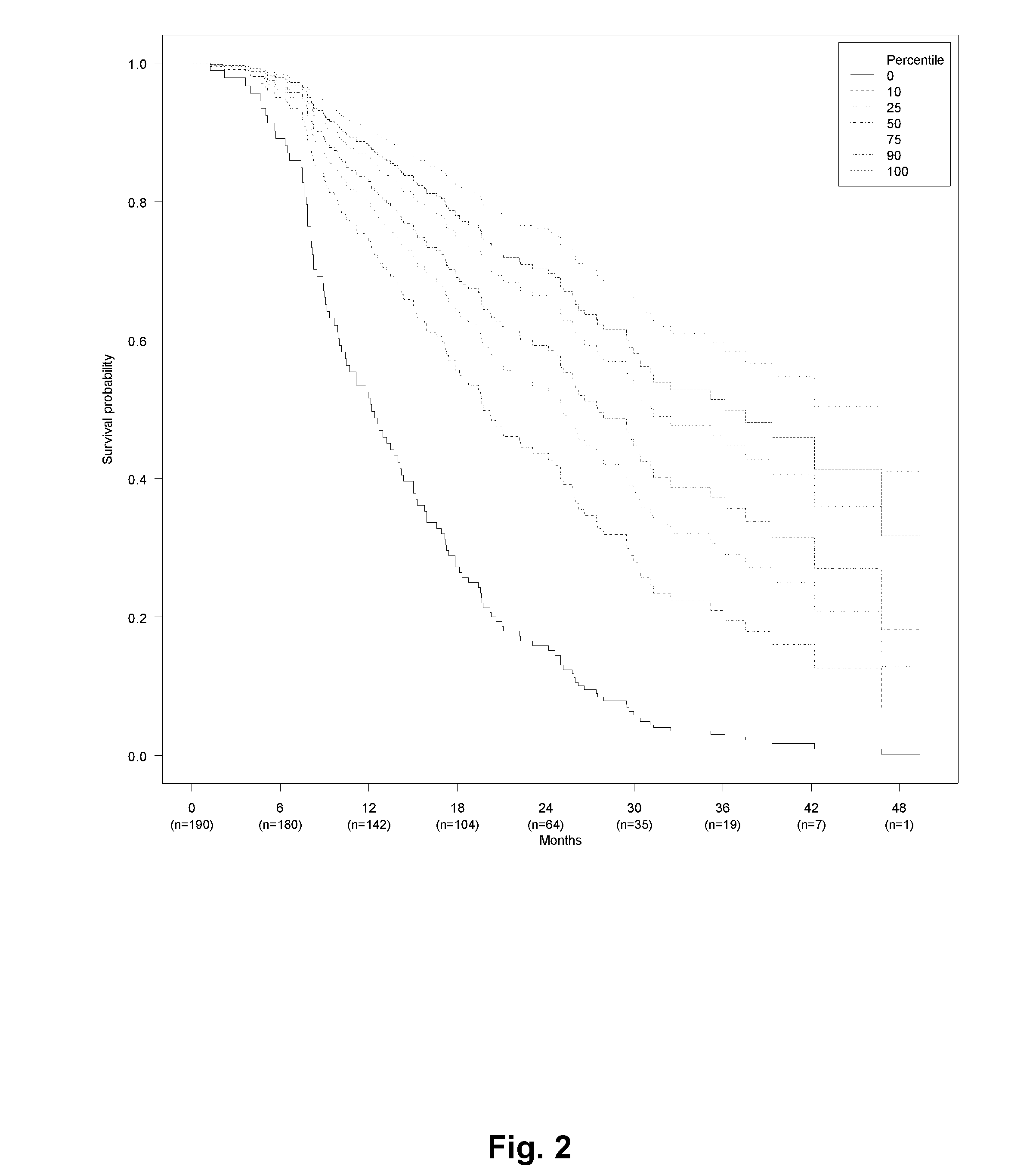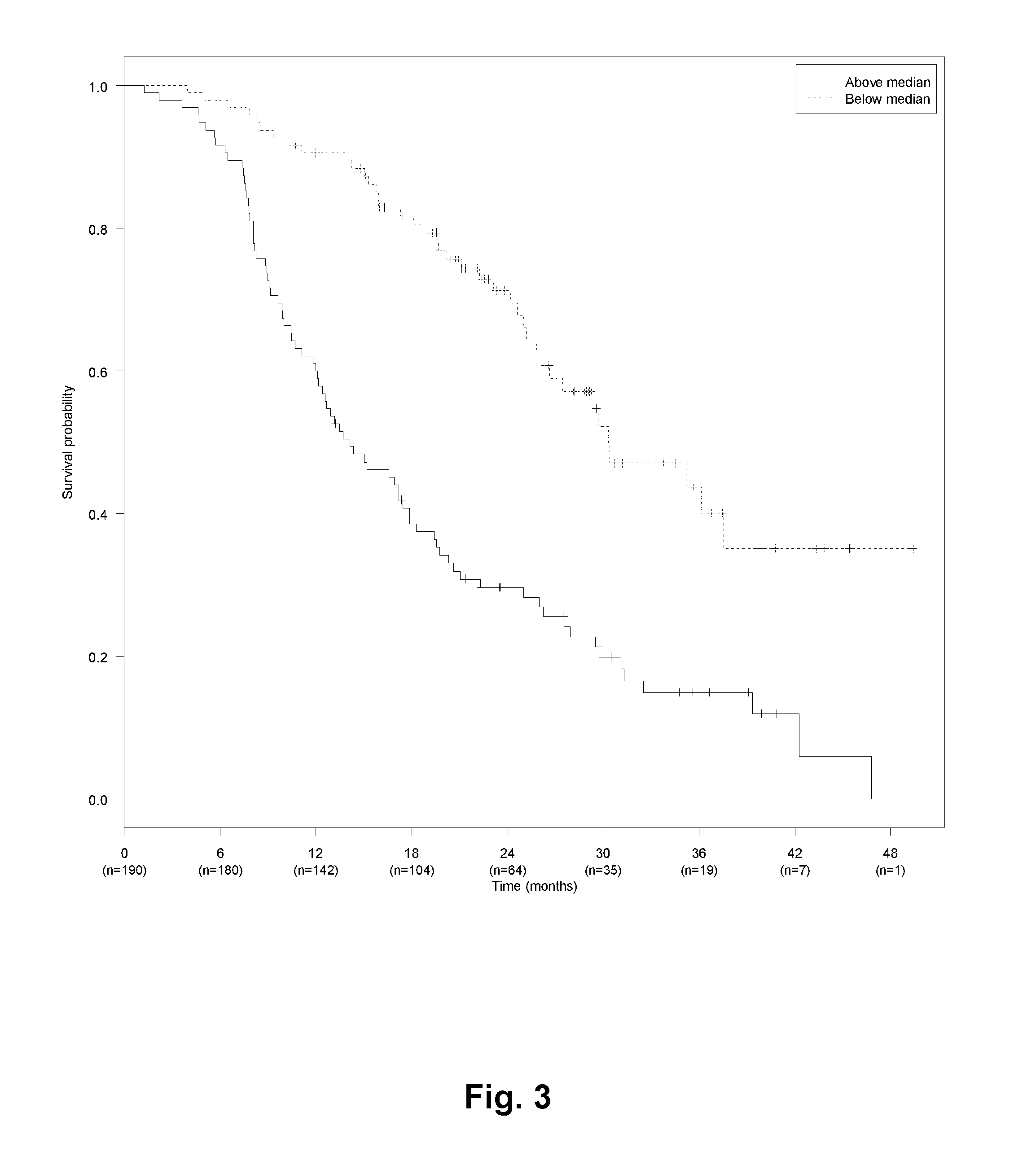Micrornas for prediction of treatment efficacy and prognosis of cancer patients
a cancer patient and micrornas technology, applied in the field of personalized medicine, can solve the problems of increasing the cost of biologic treatment, and achieve the effect of improving the prognosis and treatment efficacy
- Summary
- Abstract
- Description
- Claims
- Application Information
AI Technical Summary
Benefits of technology
Problems solved by technology
Method used
Image
Examples
example 1
Patients
[0424]Patients with metastatic colorectal cancer (mCRC) treated with first line bevacizumab (Bev) and chemotherapy (capecitabine and oxaliplatin (CapOx)) from seven Departments of Oncology in Denmark were retrospectively included. Inclusion criteria were biopsy-confirmed adenocarcinoma of the colon or rectum with distant metastases, and first line systemic treatment for metastatic disease with CapOx and bevacizumab (CapOxBev). Exclusion criteria were: other malignancy during the past 5 years or discovered during treatment or follow-up, uncertainty about primary tumor location, primary tumor in appendix, endocrine histology, and CapOxBev given explicitly as neo-adjuvant or adjuvant treatment.
[0425]Data about baseline characteristics, treatment, and disease progression was extracted from patient records and electronic databases at each hospital. Pathology data and survival status was extracted from national databases using the unique Central Person Registration number assigned...
example 2
Validation Study
[0443]A two-armed validation study is performed, each encompassing 200-250 new FFPE tumor samples from patients with metastatic CRC included from 5 hospitals in Denmark. In one arm patients with metastatic CRC who received CapOxBev are included, as described in Example 1, and in the other arm patients with metastatic CRC who received CapOx chemotherapy only are included. MiRNAs validated in the CapOxBev arm only are preferred as they are likely to be related to the efficacy of bevacizumab addition to chemotherapy.
[0444]CRC tissue samples are collected as described herein above in Example 1 and RNA is isolated as described herein above in Example 1.
[0445]30 different miRNAs with the lowest p-values determined as described in Example 1 are analysed using a miRNA array from Fluidigm BioMark System. This array system can perform 2,304 simultaneous real-time PCR experiments running gold-standard TaqMan® assays in nanolitre quantities. The 30 miRNAs will primarily be selec...
example 3
Patients
[0446]400 patients with metastatic CRC treated with chemotherapy (capecitabine and oxaliplatin) and with bevacizumab (CapOxBev) are included from the two cohorts described in Example 1 and 2.
[0447]5-20 different miRNAs (selected as described in Example 2) are analysed using miRNA PCR method with reagents from TaqMan®. Thus primers useful for amplification of the selected miRNAs are as provided by Applied Biosystems, United States.
PUM
| Property | Measurement | Unit |
|---|---|---|
| diameter | aaaaa | aaaaa |
| temperature | aaaaa | aaaaa |
| temperature | aaaaa | aaaaa |
Abstract
Description
Claims
Application Information
 Login to View More
Login to View More - R&D
- Intellectual Property
- Life Sciences
- Materials
- Tech Scout
- Unparalleled Data Quality
- Higher Quality Content
- 60% Fewer Hallucinations
Browse by: Latest US Patents, China's latest patents, Technical Efficacy Thesaurus, Application Domain, Technology Topic, Popular Technical Reports.
© 2025 PatSnap. All rights reserved.Legal|Privacy policy|Modern Slavery Act Transparency Statement|Sitemap|About US| Contact US: help@patsnap.com



